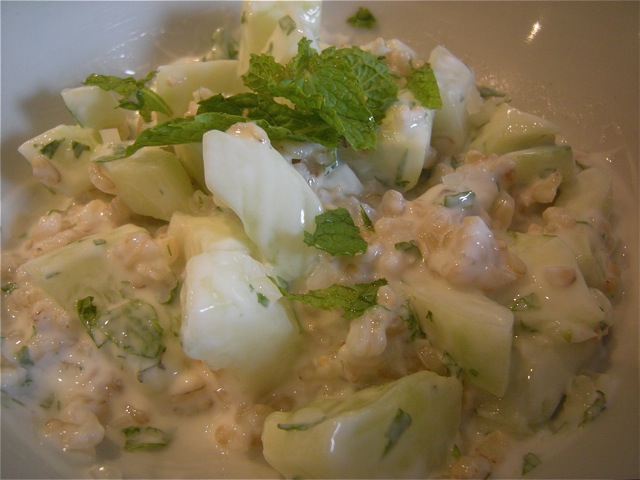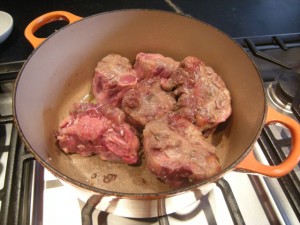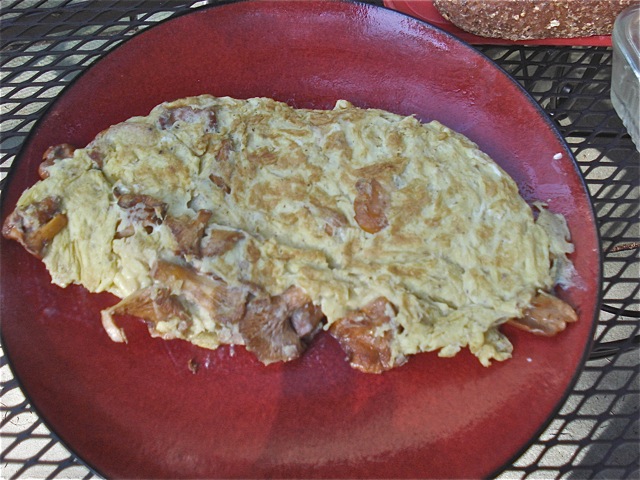Do you like cucumbers? I do now, but it is a taste I acquired over the years. Cukes were popular in my family only in cornichons form (tiny cukes pickled in vinegar). I don’t remember if it is my father or my grandfather who used to say “les concombres, ils me reprochent,” meaning not he didn’t digest them well, but that he would hear from them under the form of burbs for hours after ingestion, hence the “reproach” to have eaten them! So, for years I was prejudiced against cucumbers and assimilated them to reproaches & English sandwiches — and thus they had no place in my cooking repertoire! But once I was able to look beyond my Pyrenean mountains for culinary inspiration, I realized how widespread cucumbers were in many Mediterranean cuisines and how delicious they are.
This summer I am eating a lot of them as I am trying to eat “cold” foods as recommended by my good friend, poet & artist Yuko Otomo. She gave me a few ideas on how to eat them with seaweed & tofu, which I liked very much, but my favorite version is the one I am featuring today. Most of you will recognize it’s direct source. Yes, it is a sort of Tzatziki, in Greek or Cacık in Turkish, usually served as a mezze, appetizer or used as sauce for souvlaki & gyros. In order to make it more filling for my lunch I added some brown rice and gave it a twist with the addition of a touch of mustard. Another healthy, cheap, refreshing lunch brought to you by Voilà Nicole! By the way, do not miss Trialogues (Pierre Joris, Michael Bisio & moi) this coming Monday August 23rd 8PM, part of Evolving Voices Series, at Local 269 (269 East Houston NYC).
Recipe:
Peel, cut lenghtwise, then empty out seeds of 2 organic local cucumbers (avoid the ones individually wrapped in plastic)
Options:
1-soak cukes in salted ice water for 30 minutes. drain for 15 minutes
2-In a glass bowl sprinkle them with salt (coarse salt), cover , let drain in a colander for 30 minutes. Rinse and pat dry.
3-Simply use them, right off the bat, skipping either of these options — that is what I do most of the time. They are a little more watery but I read that the juices are actually very good for you.
In a bowl mix:
1/2 tbs of mustard (Grey Poupon type)
1 cup of goat milk yogurt
Mix & add:
1 grated clove of garlic
1/4 cup of finely chopped onions
1/2 cup of chopped fresh mint
1/4 cup of cooked brown rice
Mix & add:
cucumbers
salt+pepper to taste & mix well
Voilà!







 1 zucchini
1 zucchini



